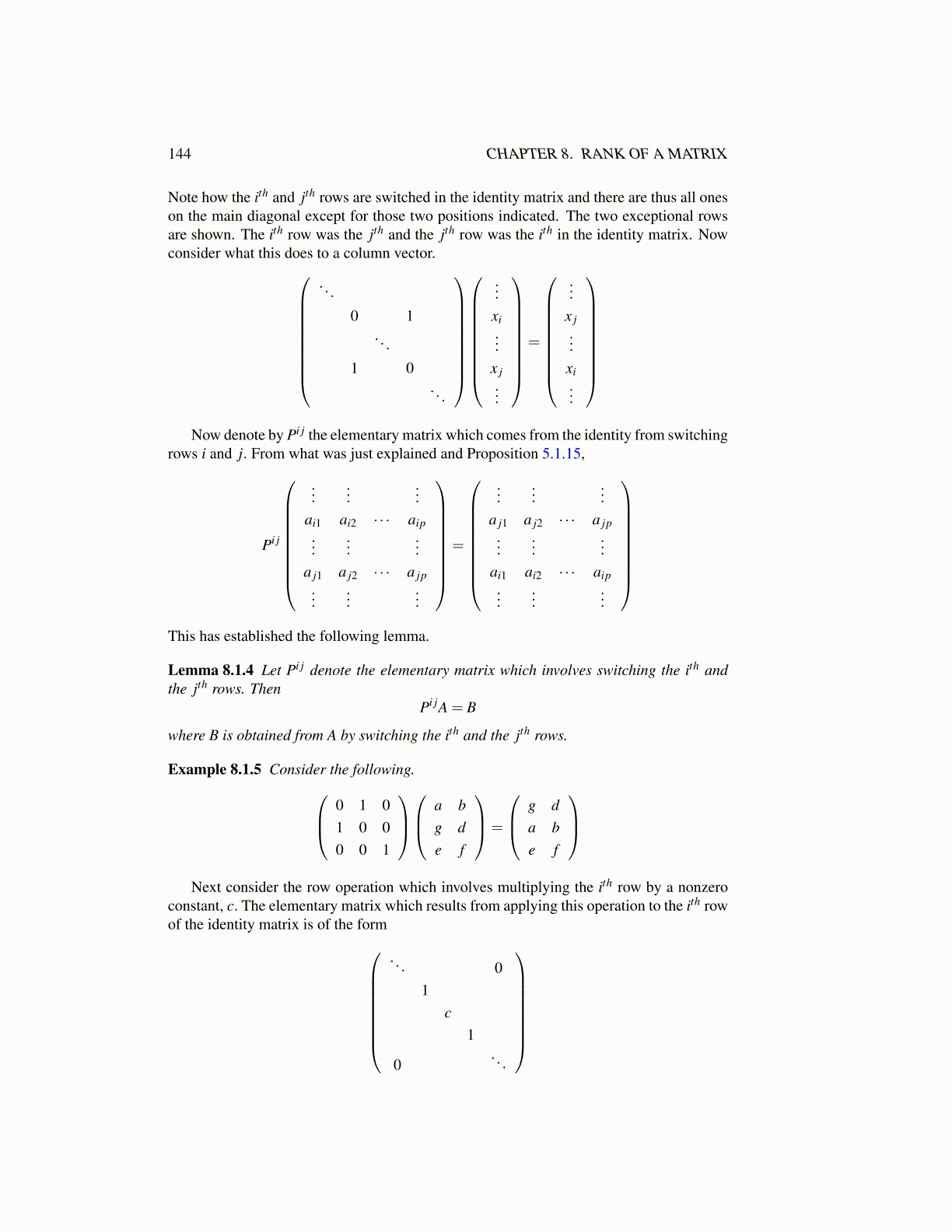
144 CHAPTER 8. RANK OF A MATRIX
Note how the ith and jth rows are switched in the identity matrix and there are thus all oneson the main diagonal except for those two positions indicated. The two exceptional rowsare shown. The ith row was the jth and the jth row was the ith in the identity matrix. Nowconsider what this does to a column vector.
. . .
0 1. . .
1 0. . .
...xi...
x j...
=
...x j...xi...
Now denote by Pi j the elementary matrix which comes from the identity from switching
rows i and j. From what was just explained and Proposition 5.1.15,
Pi j
......
...ai1 ai2 · · · aip...
......
a j1 a j2 · · · a jp...
......
=
......
...a j1 a j2 · · · a jp
......
...ai1 ai2 · · · aip...
......
This has established the following lemma.
Lemma 8.1.4 Let Pi j denote the elementary matrix which involves switching the ith andthe jth rows. Then
Pi jA = B
where B is obtained from A by switching the ith and the jth rows.
Example 8.1.5 Consider the following. 0 1 01 0 00 0 1
a b
g de f
=
g da be f
Next consider the row operation which involves multiplying the ith row by a nonzero
constant, c. The elementary matrix which results from applying this operation to the ith rowof the identity matrix is of the form
. . . 01
c1
0. . .